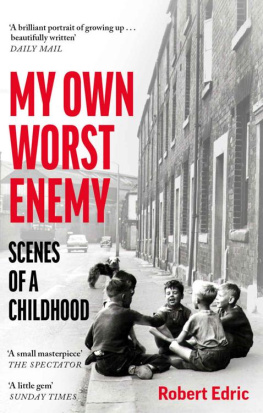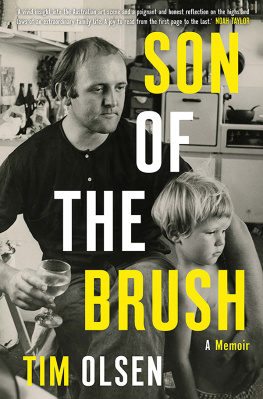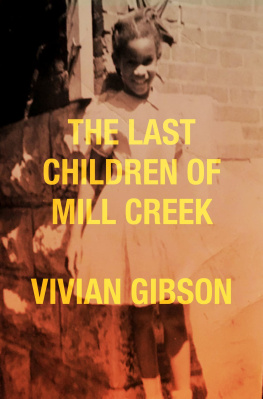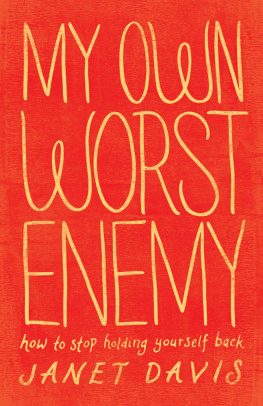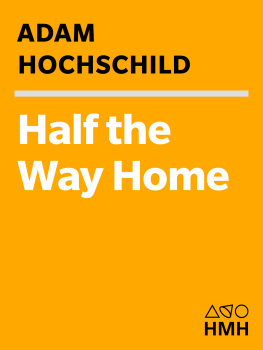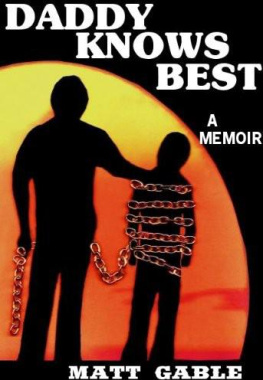
for Gloria, Joan A, Joan R, Mary, Teresa & Valerie
O ne afternoon, when I was twelve years old and had recently started at grammar school, I came home at half past four to find both my mother and my father already there. This was unsettlingly unusual: ten to six was my fathers regular return from work, my mother having arrived a frantic quarter of an hour earlier to prepare the cooked meal he expected to be awaiting him.
All of us in that small house were acutely aware of my fathers comings and goings, of the shadows he cast, but what made this particular occasion even more unnerving was the fact that he was now sitting in his usual place his chair, beside the fire facing the television wearing an all-too-obvious wig to cover his balding head. He was still a young man thirty-four or -five but his hair was already half lost, leaving a thin, carefully configured wreath above his ears and across the back of his head. The few longer strands of hair were combed over the top, and everything was held in place with hair spray. The vivid scarlet and black of his Cossack aerosol can was decorated with the outline of a horseman a Cossack, presumably wearing busby-like headwear and brandishing a curved sabre. The smell and residue of the spray filled the small kitchen where my father prepared himself before his equally punctual departure at half past seven to one or other of the pubs he frequented most nights of the week.
My mother, a year younger, sat beside him, avoiding looking at his head, and both of them watched me closely as I came into the room. Naturally, I wanted to know why the pair of them were home at that earlier time and what this sudden drama of the wig meant.
My father was a vain, self-regarding man, endlessly preening and combing and brushing and checking his appearance; but even for him this seemed an excessive and ridiculous ridiculously public step to have taken. Both of them continued watching me, waiting for me to speak, causing me to become even more cautious with my response. My father would argue black was white, and my mother usually encouraged everyone present more often than not myself, my younger sister and brother to go along with this to prevent any further anger on his part.
I finally said something noncommittal, like, I can see somethings different.
This seemed to work, briefly.
Its your dads new haircut, my mother said tentatively. Hes had it styled differently, something more modern.
Styled . Even the word and all it implied added another edge to the exchange. Nothing about that household or the five people in it was ever styled .
But even this clearly untrue explanation left me wondering. Whatever they might have wanted me to believe, it was still all too obviously a wig. The hair immediately above his ears was pale and greying, and while there was clearly some attempt to blend the artificial with what remained of the real, the join, like everything else, was glaringly evident. The new, flatter covering over the top of my fathers head was now a shiny, almost gingery colour.
Then my father broke the spell of uncertainty which held all three of us and said, He can see Ive not had it cut different. Give the lad some credit. Its a toupee.
Thats right. Not a wig, my mother added quickly, almost as though between them they had been trying to trick me.
Its real hair, my father said, almost proudly. Human hair. Styled and fitted to match his own hair precisely, and coloured to blend seamlessly with what little of that hair he still possessed.
In my usual evasive, compliant way, I looked more closely and told him you could hardly tell.
Of course you cant, he said. Thats the difference between a toupee and an ordinary wig.
I wondered if I was expected to reach out and feel it. I rarely went too close to my father, none of us did.
Only then, wondering what to say next, did it occur to me that, apart from my mother and whoever had created and then fitted the contraption to my fathers head, I was the first to witness this transformation.
You can hardly see the difference, I said again, pretending to search for the invisible seam.
I sensed even then, at that young age, that this was the great paradox, burden and fear of all wig-wearers, and especially male wig-wearers: that everyone, absolutely, positively everyone even those people who had never known or seen you pre-wig knew that you were wearing a wig. The wig-wearer was compromised and the person who knew it was a wig was doubly compromised. Whatever happened whatever conversation or exchange now took place in my fathers life everything would be overridden by those styled, pale gingery hairs sitting on his head. Whereas before, his vanity had been something those around him had taken for granted and either tolerated or ignored, now it shouted out at them every time he appeared and as they tried not to let their amused gaze wander above his eyes.
Its called a Crown Topper, he said. He showed me a brochure that had been hidden beneath the newspaper on the floor beside him.
The glossy pages showed Before and After photos of once-bald and now-toupeed men. And on not a single one of them did their new head of hair look any more natural or any less obvious or ridiculous than it now did on my father.
Its called a weave, my mother said. Every single hair, and there are hundreds
Thousands, my father corrected her.
Thousands. And every single one of them has been put in place by hand and then cut and styled to look like that. My mother, I knew, was as wary and as fearful of her own part in the exchange as I was. I could hardly remember having had a normal conversation with my father before, let alone one as momentous and as dangerous as this.
Knowing some further admiring or encouraging response was being prompted, I asked him how it stayed on his head, and before answering me, he took hold of the hair at the crown of his head and peeled it slowly forward, flinching at the slight tug of the adhesive tape which held it in place. This tape, he explained to me, came in a roll, like Sellotape, but was double-sided, to be cut freshly and applied daily. He continued rolling the hair forward until the flimsy scalp sat in his hand. He held this out to me.
You can feel it, my mother said, as though this might help.
I touched if for a respectable second or two and then drew back my hand. I was more impressed by the fact that you could get double -sided adhesive tape.
Every six months I have an appointment to go to the Crown Topper agent to see if anything needs altering, my father said. All part of the Executive Service .
I wondered what he meant. Did he mean the hair would grow?
Colouring, my mother said. It keeps everything looking natural. Everythings properly done. By experts. Its not cheap.
For my mother, the lack of money in our household was a constant and worrying concern, something to be scrupulously controlled on a weekly, often daily basis. The wig toupee I was then told, had cost hundreds of pounds. I was expected to be impressed by this and so I let out a long, admiring breath and nodded slowly. My father, I knew, and despite his endless quest after Lifes bargains and knock-down prices, would regard the expense as a further guarantee of the wigs quality.
I had started learning French only months earlier. Above the first e of the word toupe was an accent, and I knew what that accent was called and what it signified. I knew what they were all called and what they all signified. I resisted showing off this cleverness in front of my father, but I knew that this additional, exotic, unnecessary extra would also have appealed to him. Just as it would have appealed to all those other men trying desperately to avoid using the word wig or hairpiece.
Next page
